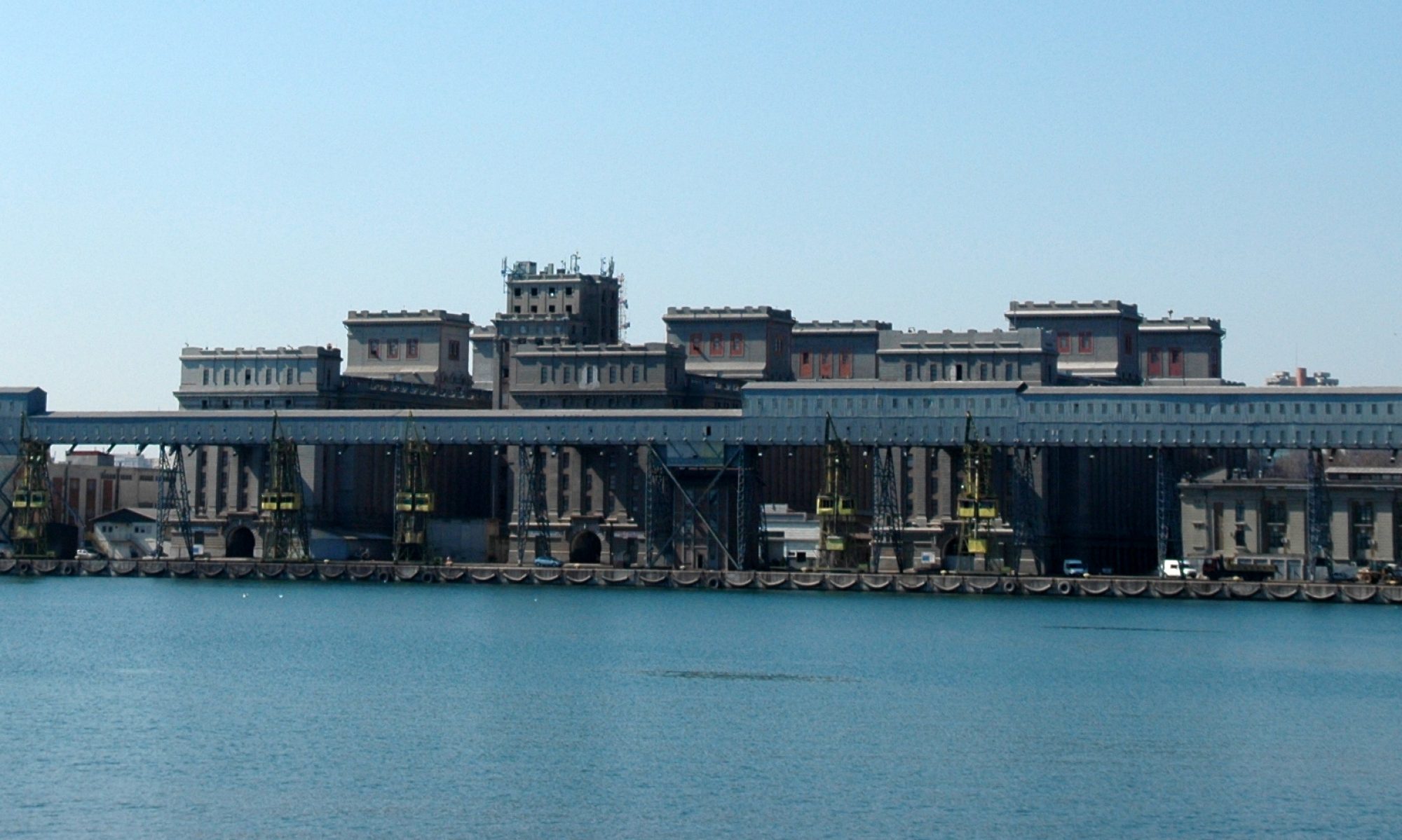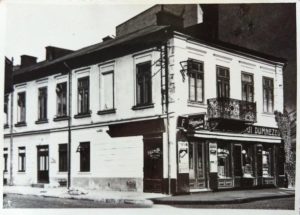
The Counter at Grand Central Terminal, 1929
I once had this dream. Don’t remember if I was actually sleeping – or just slipping away.
I dreamt I was completely worn down by my life as I knew it. Exhausted by all the painful memories that were blurring all the positive ones. Roaming around every day and trying new stuff, but it wouldn’t work.
Thinking, what doesn’t kill you, makes you stronger.
Realising, after a while, that the stronger you get – you only get lonelier.
After a while, I got so weary, I couldn’t learn how to enjoy whatever was going to come anymore at all. I’d only see the lousy sides of everything and would draw miserable conclusions, so life would increasingly become a downwards spiral, with little variation.
I kept searching for a way to change it.
After a while, I learned that there was a counter where you could go to and give up your life, as a package, and ask for another one in return.
But you wouldn’t know what was in the new package, before you traded the old one in. You had no way of choosing.
Eventually, I found the building. It looked like a station, although you could walk around it. It had only one large double door.
I watched it from a distance, time and again, wondering if now was the right time to ask for the exchange.
I’d sneak around the impressive thing, observing the people who went in and out. They were not showing any major change in mood. But they’d come out with a different look on their faces. As someone else.
Every time I’d go there, I would toy around with the idea. And wonder.
Maybe the time’s not ready yet- imagine, you’ll give up all your memories, entirely.
All of them.
You wouldn’t know your loved ones anymore.
You wouldn’t remember how you discovered sunshine, in a plastic fishbowl, one morning.
Or your grandma’s generous smile. Sour cherries on mown grass.
The taste of freshly ground pepper on tomatoes, that grandfather made you eat one day, because ‚You can’t say you dislike something, without ever having tried it.’
You’d never remember that day dad held you on his knees, while you were crying over your first bleeding knee, and how he told you that it was going to be ok.
That way the streets smelled after a summer storm, or how mom would come home with a sunflower from ‘patriotic work‘ in a nearby field. Exhausted, but smiling.
You wouldn’t know your favourite perfume anymore. Or your first kiss.
Or your first trip abroad, when you discovered ‚the other world’, Switzerland! The land the old ones had told so many stories about. The wonderful house on the hill, where your godmother lived!
That amazed way in which someone, who had really mattered back then, had looked at you one morning.
Your first flight, alone! The travels!
…Those warm hugs with friends, when you came back, after all these years – it took them a couple of years to trust that you were going to stay, this time.
That crazy chase in the streets, one short happy night.
All of these were linked to painful memories, that would seep through, just when you were recalling the good ones!
The loved ones had judged you and had turned against you so many times, for no big reason,
the fish bowl had mysteriously disappeared one day.
Grandma had died years ago – and nobody smiles like that anymore these days. Most cherries had had worms in them – how could she eat them without caring!
Dad had told you, furious, one day, “You are as reckless as your grandfather used to be.” Grandfather had died when you were six years old and you don’t really remember him that well…
Back then, you`d always have bleeding knees in summer, because you were invariably veering too close to the corner of the house with your bike. The torn lip was from your first humiliating fight at school.
After that, things had gotten worse for years: you remember having been involved in more fights than others would remember their afternoons of holding hands and kissing behind the school.
Mom’s face looks ashen with exhaustion almost every day now, but she still keeps trying to save the world. And there’s always so much more to be saved than is humanly possible.
So many other women are wearing your perfume. The guy who gave you that first kiss had told you, two days later, that he had only kissed you out of ‚duty’ and that you should forget about it, because he knew you had been fancying him for two years now…
You had never encountered the Switzerland of their stories – it was probably gone long before you were born – and the new one you had found instead had, in time, turned a very cold face at you.
That someone with the rapt look on his face had cheated on you in a terrible way.
You had flown so many miles alone, wishing there was someone waiting for you at the airport, that the mere memory of those flights would turn your stomach.
So much about the friends.
And the chase that night? He had been drunk and exuberant – and had returned to his girlfriend the next day – and you were probably the only one to remember that night in a lovely way anyway. It was gutless and sad, because you knew him since you were kids, so you trusted him.
So many things had been unclear – and you had turned them sunny in your mind, only to be disappointed afterwards.
So, here we are now. Have it, all of it, the whole package, with all its memories, let someone else delight themselves with its content, may they enjoy having that enthusiasm, the wits, your courage and your smile. Those skills, your love of so-many-things-in-this world, books and horses and languages and everything. Let someone else have it all! …And take that gruesome hypersensitivity along with it, too.
Maybe they’ll handle it better.
What if there are other, much more terrible lives, that people come to trade in? Are you feeling you’re there, now?
Would you trade your whole life in, for that? he said, frowning.
Only desperate souls come to trade their lives in at this counter.
Smart ones. Because happy simple souls can`t even find the place anyway.
Would you switch with another desperate soul, is your misery so much sadder than theirs?
I never found the counter. And, I must say, I don’t think of it that often.
Lately I think that “in the battle between you and the world, bet on the world”, as the saying goes.
I also wish to learn how to enjoy this world, instead of trying to battle it.
I guess I’m a slow learner.

 Not so long ago, in the 80s, people would queue for food. Author unknown
Not so long ago, in the 80s, people would queue for food. Author unknown
 Temple of Bel. 2004No situation describes the actual times better: a bunch of uneducated fanatics runs around blowing up in a matter of minutes what has been put up more than 2’000 years ago with more skill and craft than we can deliver today with modern machinery.
Temple of Bel. 2004No situation describes the actual times better: a bunch of uneducated fanatics runs around blowing up in a matter of minutes what has been put up more than 2’000 years ago with more skill and craft than we can deliver today with modern machinery. Great Colonnade at Palmyra, 2004.
Great Colonnade at Palmyra, 2004. A July morning in 2004, 6am
A July morning in 2004, 6am
 Altar. Temple of Baalshamin, built in 131AD. 2004.
Altar. Temple of Baalshamin, built in 131AD. 2004. A lizard hiding in the altar wall, 2004
A lizard hiding in the altar wall, 2004 Destruction in 2015. ©REUTERS/Social Media
Destruction in 2015. ©REUTERS/Social Media 







 Today I helped grandma out with the Christmas tree. I climbed up the ladder and got the box with the decorations down from the top shelf. The box!… one more piece that survived from the pharmacy!
Today I helped grandma out with the Christmas tree. I climbed up the ladder and got the box with the decorations down from the top shelf. The box!… one more piece that survived from the pharmacy!
